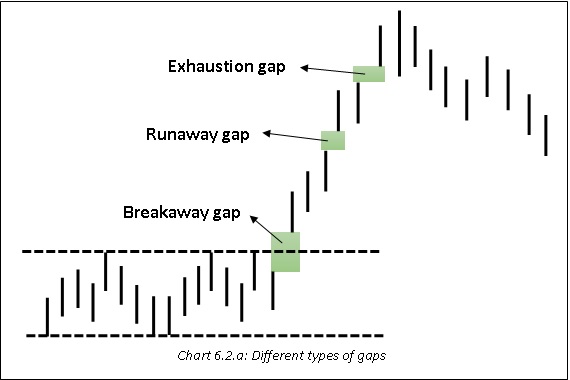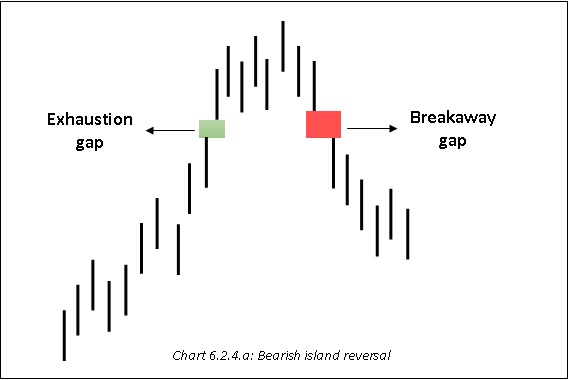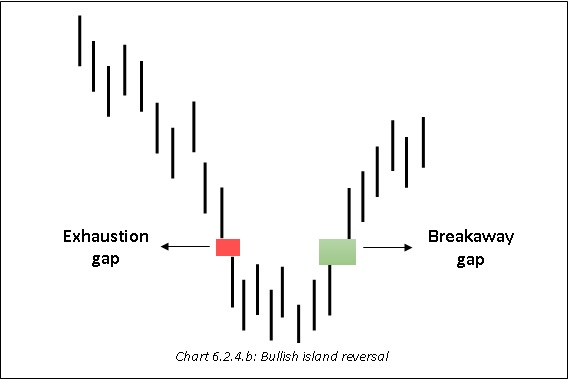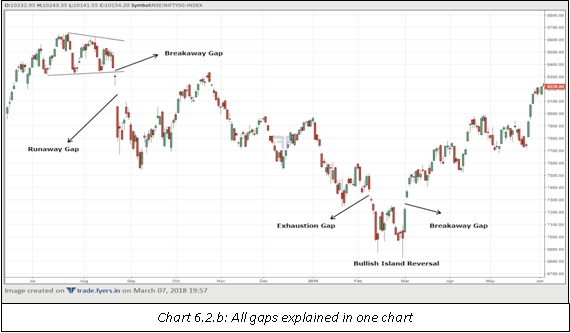
Introduction
Often, a chartist will encounter gaps on the charts across various time frames. When combined with other tools, gaps can be quite valuable. But what exactly does one mean by gaps? Simply said, gaps are blank regions on the chart where no trading has taken place. So, if current bar low is above previous bar high, there is a gap. Such a gap is called an upside gapand is considered bullish. Similarly, if current bar high is below previous bar low, there is a gap. Such a gap is called a downside gap and is considered bearish. Gaps are very common on daily charts. They can also be found on weekly or monthly charts, but their occurrence is relatively rare on these time frames. Nonetheless, when they do appear on weekly or monthly charts, they can be quite significant. On rare occasions, gaps can also be found on intraday charts, especially when some major event or news comes out during the trading session.
Gaps can act as important areas of support and resistance. For instance, when an upside gap is formed and price heads higher over the next few days, any subsequent declines later on can be met with support at the lower end of the gap. If this gap gets eventually filled and selling continues, then and only then can the weakness be expected to continue. Similarly, when a downside gap is formed and price heads lower over the next few days, any subsequent rallies later on can be met with resistance at the upper end of the gap. If this gap gets eventually filled and buying continues, then and only then can the strength be expected to continue. An important thing to keep in mind is that gaps are visible only on bar and candle charts. They are not visible on line or point and figure charts.
Types of gaps
There are three types of gaps that we will be discussing in this chapter. These are:
-
Breakaway gap
-
Runaway gap
-
Exhaustion gap
In addition, we will also be discussing about a special type of pattern called an ‘island reversal’, which comprises of two gaps mentioned above: the exhaustion gap and the breakaway gap
Breakaway gap
A breakaway gap, as the name suggests, is a gap that occurs when price breaks out of a price pattern, either on the upside or on the downside. We have already discussed about various price patterns in the previous chapter. When any of these patterns break with a gap, a breakaway gap is said to have occurred. Besides, breakaway gaps can also appear when price breaks out of a support or resistance, trendline, channels etc. A breakaway gap that is accompanied by an increase in volume is a significant development and increases the probability of price continuing in the direction of the breakout. Also, breakaway gaps that occur along with high volume increase the odds that the gap will not be filled any time soon.
Runaway gap
Runaway gaps are those gaps that appear when the price is strongly trending in one direction, up or down. These gaps usually appear somewhere around the middle of the ongoing trend. They are also known as continuation gaps, because they continue the prevailing trend. As runaway gaps are continuation gaps, they must be accompanied by an increase in volume. This is because for the prevailing trend to continue, increased interest by market participants is of paramount importance. Without this increased interest, the gap is likely to quickly filled. There can be more than one runaway gap during the current move. However, with the appearance of each new runaway gap following the first gap, the probability of the trend continuing decreases as it usually signals at an overextended market. Like breakaway gaps, runaway gaps are also not filled any time soon.
Exhaustion gap
Exhaustion gaps are those gaps that appear near the end of a trend, up or down. They represent an overextended market and are usually followed by a reversal in trend. When these gaps appear, it is difficult to say whether they are runaway gaps or exhaustion gaps. Such a distinction can be made only a few days after the emergence of the gap. For instance, if after the emergence of a gap in an uptrend, price continues to exhibit strength in the following days, the gap is likely to be of the runaway variety. However, if the rally starts to fade and price inches lower in the following days, then the gap is likely to be of the exhaustion variety. Exhaustion gaps are usually accompanied by a sharp pick up in volume, sort of like a buying climax or a selling climax (these concepts will be discussed in a later chapter). Unlike breakaway and runaway gaps, exhaustion gaps are quickly filled.

Island Reversal
An island reversal, as the name suggests, is a reversal pattern that appears at the end of an uptrend or a downtrend. If it appears at the end of an uptrend, it is called a bearish island reversal. And if it appears at the end of a downtrend, it is called a bullish island reversal. An island reversal consists of three stages. In the case of a bearish island reversal, the first stage is the prevailing uptrend. There is a gap that appears during this stage but is unclear as to whether it is an exhaustion gap or a runaway gap. The second stage is the stage of consolidation. During this stage, price broadly moves within a narrow sideways range. The gap that was formed earlier remains unfilled. The third stage is the stage of a reversal in trend. During this stage, a breakaway gap emerges that ends the consolidation. This gap appears at essentially the same area where the earlier gap occurred. At this point in time, it becomes clear the earlier gap was an exhaustion gap and not a runaway gap. The consolidation that takes place above the two gaps resembles an island and hence the pattern is called an island reversal. The exact scenario applies to a bullish island reversal, but in the reverse order. The first stage is the prevailing downtrend along with a gap. The second stage is the stage of consolidation during which the earlier gap remains unfilled. The third stage is the stage of a reversal in trend that is accompanied by a breakaway gap.


Notice in each of the above chart, it is not possible to say whether the gap that formed on the left is an exhaustion gap or a runaway gap. Once the breakaway gap appeared on the other side against the prevailing trend, only then could it be confirmed that the earlier gap was an exhaustion gap and not a runaway gap. Notice how each of the two gaps appear at essentially the same levels, thereby making the consolidation appear as an island.

Summary
-
Gaps are blank regions on the chart where no trading has taken place.
-
If current bar low is above previous bar high, it is called an upside gapand is considered bullish. If current bar high is below previous bar low, it is called a downside gap and is considered bearish.
-
A breakaway gap is a gap that occurs when price breaks out of a price pattern, either on the upside or on the downside.
-
Runaway gaps are those gaps that appear when the price is strongly trending in one direction, up or down. These gaps usually appear somewhere around the middle of the ongoing trend.
-
Exhaustion gaps are those gaps that appear near the end of a trend, up or down. They represent an overextended market and are usually followed by a reversal in trend.
-
An island reversal is a reversal pattern that appears at the end of an uptrend or a downtrend. It comprises of three stages: the first stage is trend continuation stage during which an exhaustion gap is formed, the second stage is the consolidation stage during which the earlier gap remains unfilled, and the third stage is the reversal stage during which a breakaway gap if formed.
Next Chapter
Comments & Discussions in
FYERS Community
Sujit Acharya commented on August 16th, 2019 at 12:54 PM
Hi Fyers,
Very well captured the concepts and addressed, I would say here I found in-depth technical analysis and will recommend this to all the newbies out there. Especially Gaps concept, no one in India tried to touch upon. Appreciate your efforts!
Shriram commented on January 26th, 2020 at 5:27 PM
Hi Sujit, thank you so much for the valuable feedback!